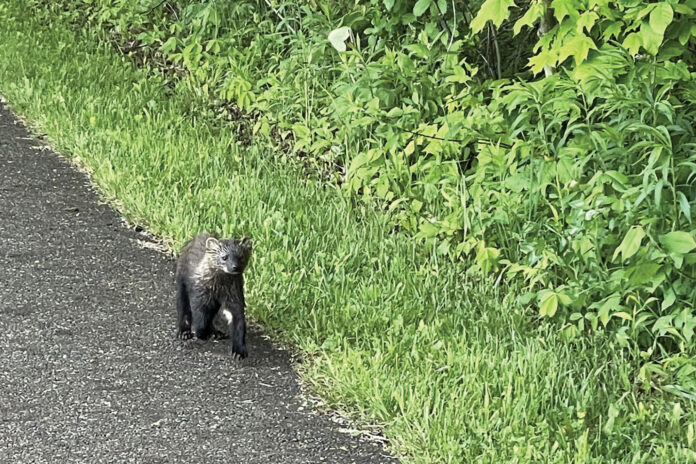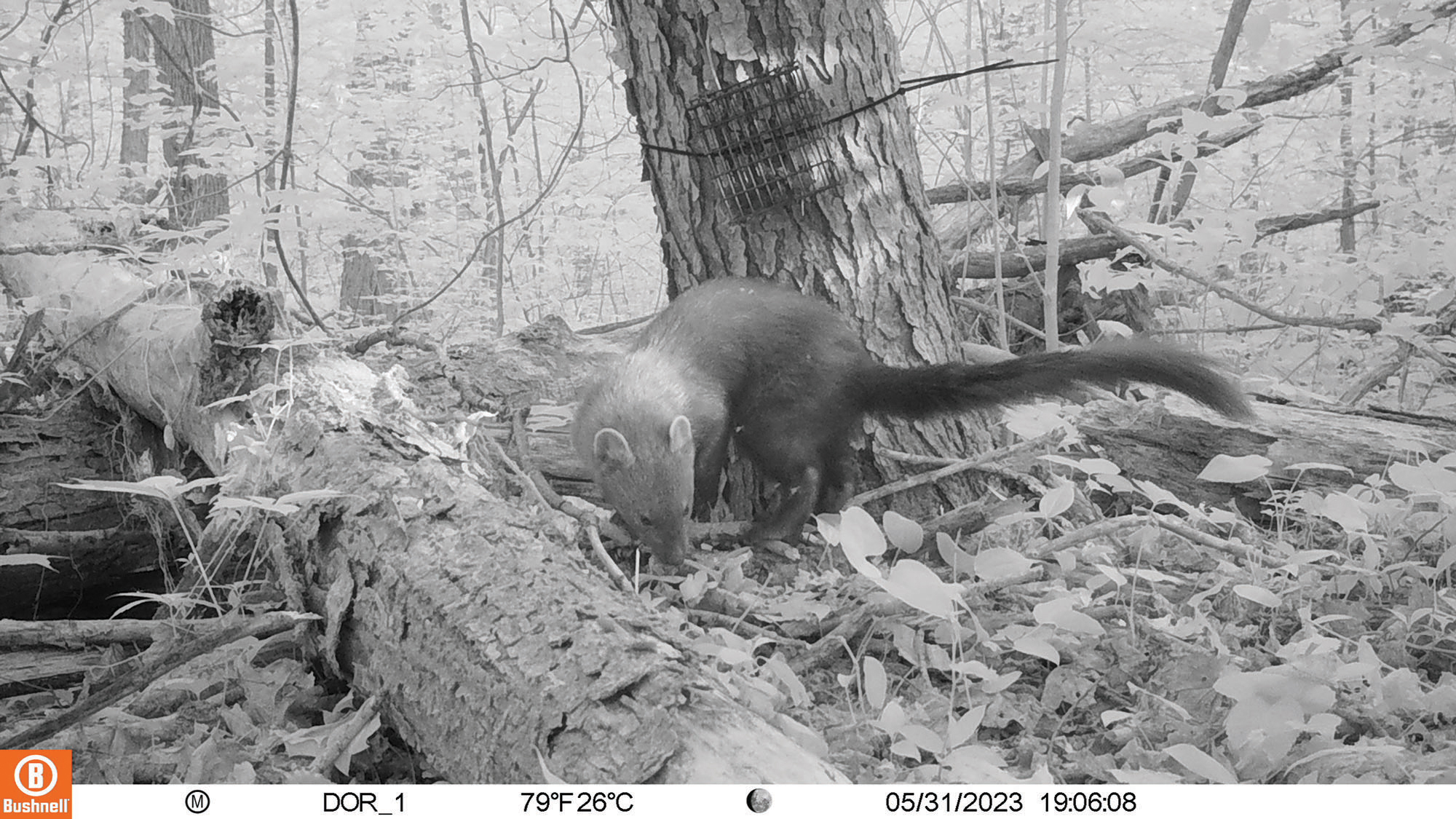
It’s no wonder that folks around here don’t know about fishers. After European settlers cleared 80% of their forest habitat and nearly hunted them to extinction, they had disappeared from Ohio by the mid-1800s.
But 30 have been sighted in the state since 2013 in Ashtabula, Lake, Trumbull, Jefferson and Columbiana counties. So perhaps it’s time to get reacquainted.
Newest carnivores
First off, fishers don’t eat fish. Well, maybe if they come upon one lying on a creek bank, said Katie Dennison, a wildlife biologist with the Ohio Division of Wildlife, whose responsibility is monitoring, research and management of Ohio’s furbearer species.
Fishers eat mostly small mammals, though they have been known to eat seeds, nuts, berries and mushrooms in a pinch. “They’re our newest carnivore to return to the state,” she said,
Their name actually comes from the French word for polecat, a distant relative from Eurasia and North Africa. Fishers are only found in North America, where they’re in the same family as weasels, otters, wolverines and badgers.
Its closest relative is the marten, though the fisher is much bigger. In that respect, it resembles another kind of cat; it weighs about as much as the common housecat.
In places that have porcupines, fishers have the endurance, wit and dexterity to hunt one for half an hour, then roll it over so as not to get pricked.
Forest dwellers
Fishers are dependent on forest, Dennison said. They prefer late-stage forest with old, standing trees, both living and dead. They are adept at hunting in trees. They can climb and descend even the tallest trees with great speed thanks to the structure and dexterity of their paws.
Females go high up in the trunk looking for an old woodpecker nest or a cavity with a small opening. There they can nest and raise young with some protection against predators.
An interesting feature of the fisher is delayed implantation, Dennison said. They mate in the spring, but the embryos remain dormant for another 10 or 11 months. The following year, in late winter or early spring, the embryos implant in the uterus and develop very quickly.
Fishers do best in old forests with closed canopies, she said. In that case, the forest floor provides structures like hollow logs or rock piles that give fishers a place to rest. They do most of their hunting around sunset and again at dawn. The counties where fishers have been sighted have the kinds of forests that fishers need.
History
The theory is these fishers wandered in from Pennsylvania. Fishers were reintroduced in six Pennsylvania sites in the 1990s, and in Pocahontas and Tucker counties in West Virginia in 1969.
In both cases, the imported fishers came from New Hampshire, Dennison said. Though they have been reintroduced in some states — including in several national parks in the Northwest — their populations seem to be doing the best in the northeast corner of the U.S.
The 30 fishers sighted since 2013 were mostly on trail cameras, with a few specimens of roadkill that were examined for age, sex and other features. Among them was a female that showed evidence of having mated the previous spring.
That’s significant because fishers live very solitary lives and establish home ranges that extend for miles. The only times they socialize is during mating.
That the female had found a mate, and that most of the 30 fisher sightings were in the past five years, are good signs that they’re making a comeback in Ohio, Dennison said.

Identification
Fishers are a special interest species and are included in the state’s wildlife action plan; it’s illegal to hunt or trap them in Ohio. But how can a hunter or trapper differentiate them from weasels, which are legal?
Fishers are much larger than weasels, she said. They have dark brown fur with only one or two white spots on the chest or abdomen. Weasels are lighter brown with an all-white underside and a black tip on the tail.
Fishers can also be confused with minks, which have similar dark-brown fur. Both have long bodies and short legs. But the fisher’s legs are a bit longer, making it stand higher off the ground in comparison.
Another way to tell them apart is tail length. “The fisher’s tail is incredibly long,” Dennison said. “It’s around a third of its total length.”
Unlike the red fox and other mammals that have returned to Ohio after a long absence, fishers have not adapted to urban environments. The areas where they have been sighted may have the kinds of forests they prefer, but they need those forests to be uninterrupted in order to move long distances.
Southeast Ohio has larger, less fragmented areas of old forest than other areas of the state, which would provide great habitat for fishers. Those forests have good connectivity with those of West Virginia, so there is the potential for fishers to move in from that state. With one hitch.
“It’s unknown how much of a barrier the Ohio River may pose to fisher dispersal in that region,” Dennison said. “But we can always hope.”











Kill chickens then they will not around for long. Ohio had to have Bob cats now 200 dead chicken and state owe me 80,000 dollars will not pay. Leave wild life out of the environment that is gone. I want my 200 chickens and 80,000 from the state of Ohio
If you paid $80,000 for 200 chickens, you have much bigger problems than bobcats.
Great article!
Mickey, you beat me to it. I was just about to comment on how good news this will be to Ohio chicken/poultry owners. And just as in PA, wildlife belongs to them until it causes damage or loss. Then, well, too bad. Nothing can be done.
I saw one last winter here in Dundee Ohio. First time seeing one!
I just love reading these informative articles. I’ve seen otters and mink, but don’t believe that I have ever come across a fisher, although I didn’t know how to identify one before reading this article.